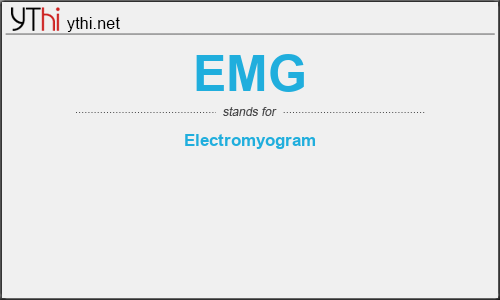What does EMG mean? What is the full form of EMG?
The full form of EMG is Electromyogram.
Electromyography (EMG) measures muscle response or electrical activity in response to a nerve’s stimulation of the muscle. The test is used to help detect neuromuscular abnormalities. During the test, one or more small needles (also called electrodes) are inserted through the skin into the muscle. The electrical activity picked up by the electrodes is then displayed on an oscilloscope (a monitor that displays electrical activity in the form of waves). An audio-amplifier is used so the activity can be heard. EMG measures the electrical activity of muscle during rest, slight contraction and forceful contraction. Muscle tissue does not normally produce electrical signals during rest. When an electrode is inserted, a brief period of activity can be seen on the oscilloscope, but after that, no signal should be present.
After an electrode has been inserted, you may be asked to contract the muscle, for example, by lifting or bending your leg. The action potential (size and shape of the wave) that this creates on the oscilloscope provides information about the ability of the muscle to respond when the nerves are stimulated. As the muscle is contracted more forcefully, more and more muscle fibers are activated, producing action potentials.
A related procedure that may be performed is nerve conduction study (NCS). NCS is a measurement of the amount and speed of conduction of an electrical impulse through a nerve. NCS can determine nerve damage and destruction, and is often performed at the same time as EMG. Both procedures help to detect the presence, location, and extent of diseases that damage the nerves and muscles.
When your muscles are sore or weak and you don’t know why, there are a couple of tests that can help give you answers.
One is electromyography (EMG). The other is a nerve conduction study (NCS). They are often done at the same time.
Your doctor can use the results of these tests to figure out whether you have a muscular problem or a nerve problem.
our muscles move when nerve signals from the brain tell them to get to work. Electromyography measures how well your muscles respond to those signals.
If the test picks up a problem, you may be diagnosed with what is called a neuromuscular disorder.


Leave a Reply
You must be logged in to post a comment.